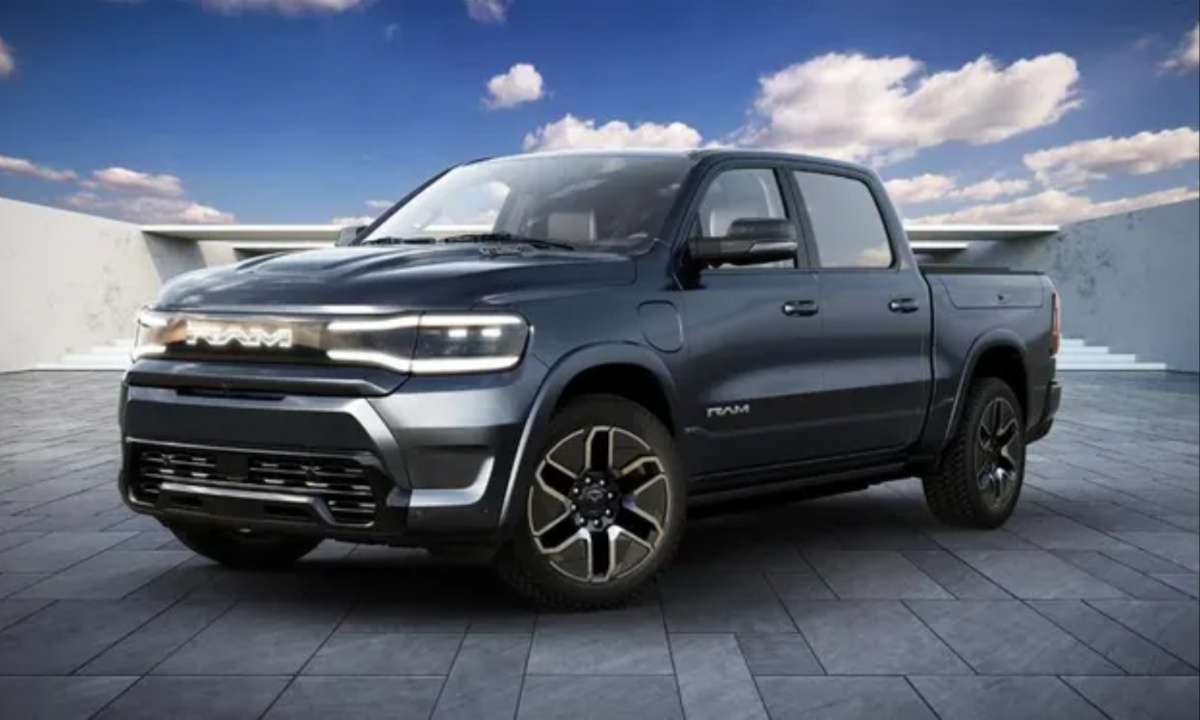Stellantis, the automotive giant behind brands like Dodge, Ram, Jeep, and Fiat, has shared new details about its upcoming electric vehicle (EV) platform for large pickups and SUVs. The platform called the STLA Frame, is designed to support vehicles with electrified powertrains in a body-on-frame design, which contrasts with the unibody construction used in Stellantis’ other EV platforms for smaller vehicles. The STLA Frame is built to handle various powertrains, including battery electric vehicles (BEVs), range-extender electric vehicles (REEVs), hybrids, and even hydrogen-powered options.
What distinguishes Stellantis from competitors such as General Motors and Ford is its multi-energy platform strategy. Instead of committing solely to full electrification, the company aims to meet the diverse needs of its customers, providing a range of powertrain options. CEO Carlos Tavares stated that Stellantis is focused on adapting to current market conditions rather than rushing into a full transition to electric vehicles. The STLA Frame platform will feature dual electric drive motors for all-wheel drive and is expected to offer 500 miles of range for the BEV model, with the REEV version providing even more at 690 miles.

The first vehicles to use the STLA Frame platform will be the Ram 1500 REV EV pickup and the Ramcharger range-extender pickup. While Stellantis has not officially confirmed a Jeep EV using the STLA Frame, there is speculation that it could be a Wagoneer or Grand Wagoneer variant. Initially set for a late 2024 release, the trucks are now expected to arrive in dealerships by the first half of 2025. Stellantis is prioritizing thorough validation and durability to ensure the technology meets high standards, which has led to the delay in the rollout.
This announcement comes during a challenging period for Stellantis, as the company recently reported disappointing third-quarter results, including lower-than-expected revenue and shipments. The automaker also lowered its profit projections for the year, citing excess inventory and a slowdown in its U.S. and China operations. Additionally, Stellantis is undergoing leadership changes, with Doug Ostermann recently taking over as CFO and CEO Carlos Tavares planning to retire in 2026. The company also had to lay off 1,100 workers at its Jeep Gladiator plant in Ohio due to declining sales of the off-road pickup.
Despite these difficulties, Tavares remains optimistic about Stellantis’ future. He believes that the company’s multi-energy platform will allow it to adjust to changing market conditions and regulatory environments. With concerns about potential cuts to EV incentives under the new U.S. administration, Stellantis feels well-positioned to navigate any challenges. The flexibility of its platform strategy, combined with its focus on durability and technology, is expected to keep Stellantis competitive as the industry continues to evolve.

